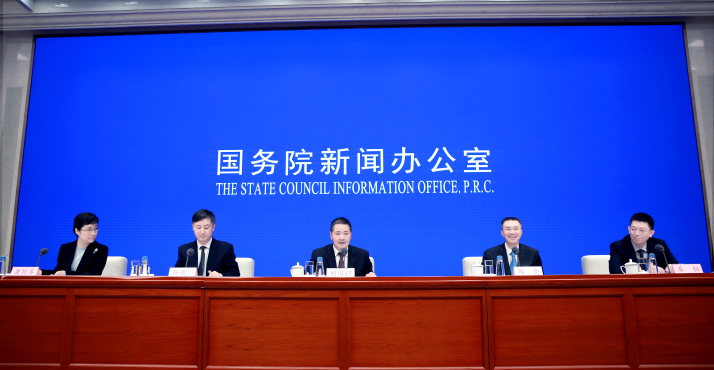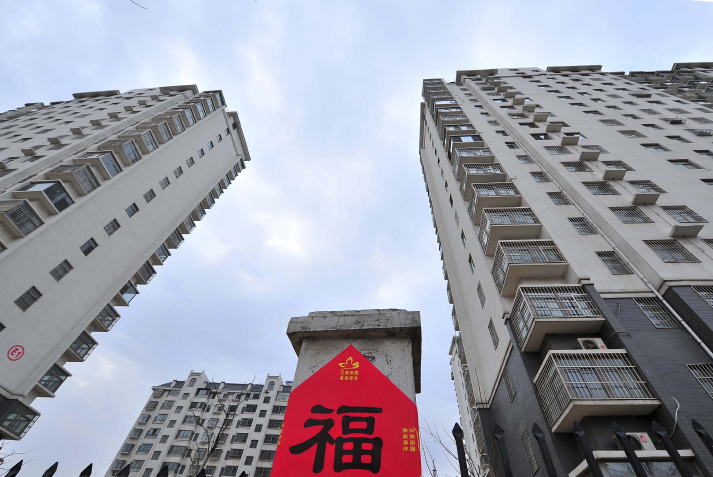| Business |
| Lending a Hand | |
| China promotes loan prime rate reform for a more market-driven interest rate system | |
|
|
 China's State Council Information Office holds a briefing on the lowering of the real interest rate in Beijing on August 20 (XINHUA)
As the conventional September-October "golden" season of property sales approaches, the People's Bank of China (PBC) has again brought the performance of the property market into the spotlight with its latest measure. In a statement on August 25, the central bank announced that China will link the personal mortgage loan rate to a new lending rate reference starting on October 8 to make the rate more flexible and market-driven. The plan is part of reform measures unveiled by the PBC for improving the loan prime rate (LPR) mechanism on August 17, with an aim of promoting the liberalization of interest rates and cutting financing costs for the real economy. Introduced in 2013, the LPR, which is the price of loans banks offer to their best clients, provides a market-based reference for banks to set loan interest rates. It has replaced the one-year benchmark lending rate and become a new anchor for all bank lending since the implementation of the reform. Zong Liang, chief economist of Bank of China, told Beijing Review the previous LPR linked to the benchmark lending rate could not always reflect changes in market rates and proved hard to adjust, making it necessary to introduce the new LPR that is more flexible. According to the PBC, the current LPR scheme can help reduce the real interest rates and improve the transmission efficiency of market interest rates, making financing more accessible to private, small and micro enterprises. More market-driven The new LPR was introduced as China eyes more market-oriented reforms. According to Zong, the new LPR reference combines benchmark and market-driven lending rates to fluctuate with the market in a predictable way. In the new scheme, the National Interbank Funding Center has begun to disclose the LPR on the 20th day of each month from August 20. In addition to the current one-year LPR, an above five-year LPR will be available to serve as a pricing reference for new bank lending. The number of quotation banks will be expanded from 10 to 18, including big national banks as well as urban commercial, rural commercial, foreign-invested and private banks to make the LPR more representative. "The inclusion of the eight small and medium-sized banks will not raise the LPR very much, because these banks also offer lower interest rates for their best clients," Sun Guofeng, head of the Monetary Policy Department of the PBC, said at a recent press conference. Efforts will also be made to make lending rates and fees more open and transparent. The central bank will continue to regulate fees charged by financial institutions and urge intermediate agencies to cut their fees. The PBC included the new LPR scheme and preventive measures to stop banks from vying to lower loan interest rates that can trigger vicious competition in the macro-prudential assessment of banks. This aims to urge market participants, small and medium-sized banks in particular, to follow new LPR rules. According to Sun, the reduction of bank loan interest rates under the new LPR scheme may narrow the interest rate differential, which can lead to a decline in bank profits. However, it can also improve loan pricing power and ensure the sustainable and sound development of the banks. "If financing costs of the real economy are reduced, banks will have more clients, and the economy will perform better, resulting in lower non-performing loan ratio and higher credit quality," Liu Guoqiang, PBC Vice Governor, stressed at the press conference. According to Lian Ping, chief economist with Bank of Communications, small and medium-sized domestic banks are still weak in terms of pricing power. Therefore, targeted policies are needed to offer these banks more leeway in pricing to help them adapt to the new rules. "Small and medium-sized banks need to further develop distinctive businesses, improve pricing power and control risks caused by interest rate changes," Zong said. Although the new LPR can greatly benefit enterprises, domestic firms still need to improve their capacity to control costs to better cope with downward pressure, he added. Along with banks and enterprises, the LPR reform is also expected to influence the stock market. As Li Chao, chief analyst of macroeconomic policy at Huatai Securities, told China Securities Journal, the improvement of the LPR mechanism can benefit both the stock and bond markets. The yield to maturity of China's 10-year government bonds will remain within the range of 2.8 to 3.2 percent. Meanwhile, as the yield rate approaches 2.8 percent along with the rise of inflow capital, the exchange rate of the yuan is likely to remain stable, Ming Ming, an analyst on fixed income securities with CITIC Securities, said.  A view of commercial buildings in Weifang, east China's Shandong Province, on February 24, 2018 (XINHUA)
Mortgage loan changes After the new mortgage loan rate scheme was unveiled, whether China's mortgage loan rate would go down became a major public concern. Data from the National Bureau of Statistics (NBS) showed that new home prices in the four first-tier cities—Beijing, Shanghai, Shenzhen and Guangzhou—climbed 0.3 percent month on month in July, up from the 0.2-percent increase in June. New home prices in 31 second-tier cities and 35 third-tier cities both went up 0.7 percent in July from June. The moderate growth suggests that local governments have maintained efforts to stabilize land and home prices and implement regulations for the sound performance of the property market, NBS senior statistician Liu Jianwei said. According to the new rule that settles lower rate limits, individual borrowers need to pay an interest rate no less than the LPR with the same maturity for a first home. For a second home, the lowest borrowing cost has to be 0.6 percentage point higher than the LPR. Therefore, individual new mortgage loan borrowers will need to pay an interest rate of no less than 4.85 and 5.45 percent for a first and second home, respectively, according to the five-year LPR. Despite the LPR reference change, the rates are almost at the same level as the current lowest personal mortgage loan rate. Therefore, the interest expense will remain unchanged for borrowers across the board, according to the PBC. The new personal mortgage loan rate can help lower the loan interest rate for enterprises, while the impact on personal home buyers will be more moderate as stable development of the property market remains a priority, Zong said. Liu Guoqiang said that the basic principles of the current property policy remain unchanged as it continues to highlight houses are for living in, not for speculative investment. "The rate for mortgage loans will not be lowered because the government will neither ease control on the real estate market nor use it as a tool to boost short-term economic growth," he said. According to Zhou Jingtong, an economist with the PBC's Institute of International Finance, the actual mortgage loan rate in different regions will be further differentiated based on local real estate control policies. Copyedited by Rebeca Toledo Comments to lixiaoyang@bjreview.com |
|
||||||||||||||||||||||||||||
|